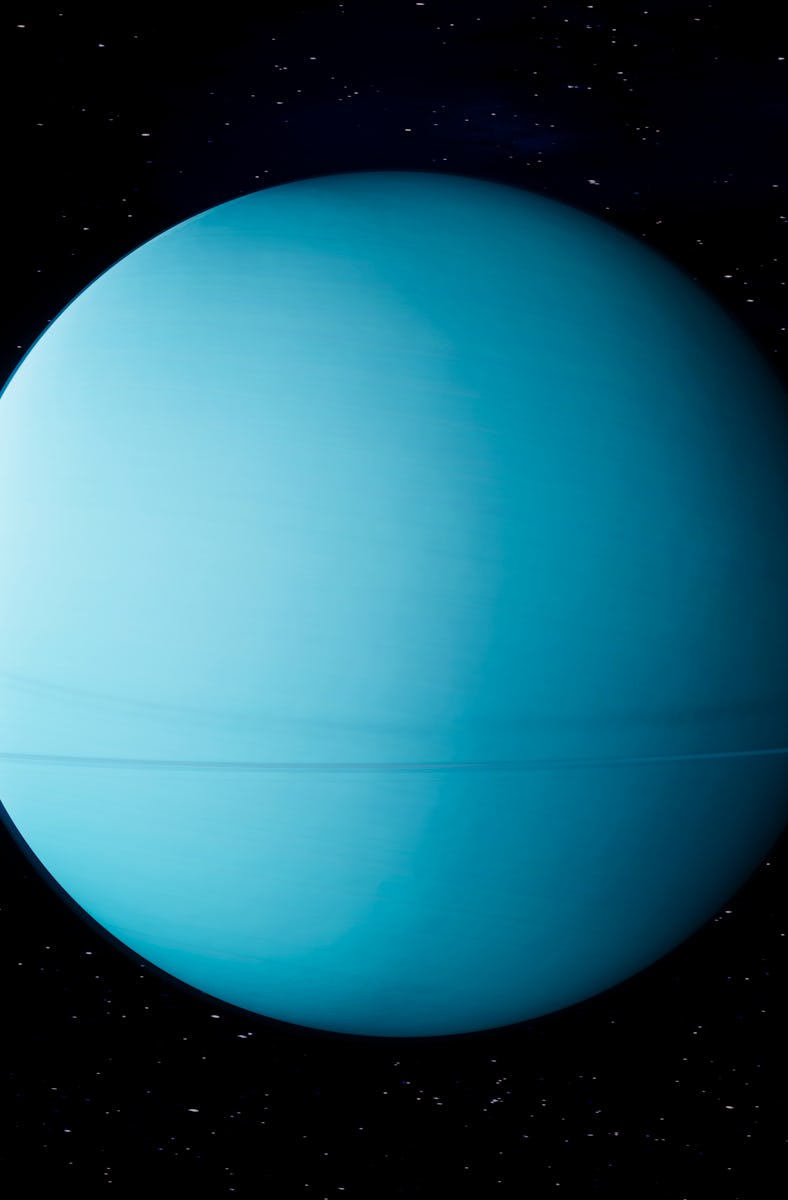Probing Uranus Could Help NASA Indirectly Find Planet Nine
If there's a planet hiding in our outer Solar System, its gravitational pull on spacecraft passing through the outer Solar System could give it away.

If NASA ever probes Uranus, it just might find Planet 9; that’s not a terrible joke, just an actual research idea from a team of physicists. NASA wants to probe Uranus, and the agency has been kicking around ideas for a mission, tentatively named the Uranus Orbiter and Probe, to do exactly that.
On its way to Uranus, the mission could also help settle the debate about whether there’s a ninth planet somewhere beyond Pluto. According to recent computer simulations by University of Zurich physicist Jozef Bucko and his colleagues, measuring tiny changes in the spacecraft’s flight path might reveal the gravitational pull of a hidden planet and tell astronomers where to look.
They published their work in the Monthly Notices of the Royal Astronomical Society (MNRAS).
Looking for Planet 9 on the Way to Uranus
Astronomers have spent years debating whether there's a giant planet orbiting somewhere in the outer reaches of our Solar System, far beyond Pluto. One of the best arguments for Planet 9's existence is the weird way a handful of small icy objects in the Kuiper Belt seem to cluster into similar long, tilted orbits, as if something much bigger was influencing all of them. Some astronomers, especially Caltech planetary scientists Mike Brown and Konstantin Batygin, argue that the “something” is a planet a little smaller than Neptune and 20 times farther from the Sun: Planet 9.
Bucko and his colleagues used computer simulations to model how the gravitational pull of planets in the outer Solar System would affect the course of NASA’s proposed Uranus Orbiter and Probe mission during the long cruise from Jupiter to Uranus. We’re talking about very tiny changes, adding up to about 12 miles over the course of ten years and more than a billion miles of travel.
But Bucko and his colleagues figured out how to unravel the subtle pull of distant Planet 9 from the competing tugs coming from Jupiter, Saturn, Neptune, and Uranus. The result suggests that keeping a close eye on the probe’s position could help narrow down Planet 9’s mass and the direction to it — assuming it’s out there somewhere.
In the event NASA actually decides to probe Uranus, Bucko and his colleagues say the mission could also discover lots of things that have nothing to do with Uranus. Radio-ranging data from the spacecraft could reveal the passing of extremely low-frequency gravitational waves or help physicists measure how much dark matter is in our Solar System.
Uranus smells like methane. We just thought you should know.
How It Works
When spacecraft are on their way to distant locations, they radio home every day. Engineers use the Doppler shift of those radio messages to measure how fast the ship is moving away from Earth, and they can be extremely precise; New Horizons’ team managed to measure the spacecraft’s velocity to within a millimeter per second. Bucko and his colleagues simulated what radio-ranging data would like over the course of the Uranus probe’s 9-year cruise between Jupiter and Uranus (if there was, in fact, a whole planet lurking somewhere beyond Neptune’s orbit).
The researchers discovered that it would be possible to figure out what part of that movement was thanks to Planet 9 — or at least, what part wasn’t thanks to the subtle pull of Jupiter, Saturn, Neptune, and Uranus, and of course the Sun. Bucko and his colleagues’ simulation only included the Sun and the four planets (that we know of) in the outer Solar System.
In real life, engineers would need to account not only for those five heavyweights, but also for the gravitational “noise” of dwarf planets like Pluto, large moons like Triton, and smaller objects in the Kuiper Belt. That means the math is more complicated, but the principle is the same.
According to Bucko and his colleagues in their recent paper, “Planet 9’s gravitational field will produce an almost constant acceleration throughout the mission,” which is “a very clear signature of unique distant objects.” And the effects of Planet 9’s gravity should get stronger as the Uranus probe flies farther from the Sun, so those changes over time will also be a good sign that it’s really Planet 9 pulling on the spacecraft. That should be the best evidence yet for the hypothetical planet’s existence (if it does, in fact, exist).
Next Step, Pictures of Planet 9?
Radio ranging data from a spacecraft on its way to Uranus should help astronomers estimate Planet 9’s mass, but the really exciting prospect is that astronomers should be able to pinpoint a patch of sky two degrees wide and two degrees tall and say “Planet 9 is somewhere in out here, specifically.”
That could tell astronomers where to look for the distant planet. Because it’s so far from the Sun, Planet 9 probably doesn’t reflect much light, so it’s going to be a difficult target for even the most sensitive telescopes; narrowing down the search area could be a tremendous help.
Assuming Brown and Batygin's computer simulations are correct about how large and how far away Planet 9 might be, astronomers should be able to photograph it within the next decade or so. But don't expect anything like JWST's recent images of Jupiter. The first images of Planet 9 will probably be just a few faint pixels.
This article was originally published on